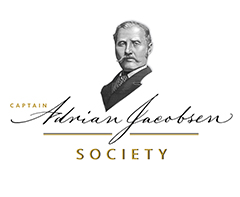Utvalgte arbeider
Reassembling The Social Organization
Aaron Glass, Judith Berman and Rainer Hatoum
«Franz Boas’s 1897 monograph The Social Organization and the Secret Societies of the Kwakiutl Indians was a landmark in anthropology for its integrative approach to ethnography, the use of multiple media, and the collaborative role of Boas’s Indigenous partner, George Hunt. Not only did the volume draw on existing museum collections from around the world, but the two men also left behind a vast and now widely distributed archive of unpublished materials relevant to the creation and afterlife of this seminal text.»
Writing the Hamat’sa: Preface and Table of Contents
Ethnography, Colonialism, and the Cannibal Dance
Northwest Coast Ceremonialism: The Works of J.A. Jacobsen (1853-1947)
The name of Johan Adrian Jacobsen (1853-1947) is likely unfamiliar to most anthropologists or students of American Indian studies, outside of the few specialists on the history of museum collecting along the Northwest Coast. While not a trained ethnologist, Jacobsen—along with his younger brother Fillip (or Philipp)—helped assemble numerous important collections from the region in the late nineteenth and early twentieth century.
RETURN TO SENDER: On the Politics of Cultural Property and the Proper Address of Art
«This essay explores two recent examples of claims for the return of objects in the context of larger historical and political struggles: the repatriation of cultural property to indigenous groups, and the restitution of artworks taken from Jews by the Nazis prior to and during the Second World War. The issues hinge on people’s agency to make object return address wider efforts toward self-determination, remembrance, and political redress. Despite important historical, social, and structural differences, these two situations display some startling similarities. I focus here on the discursive construction of the issues – attending to the language of claims for return – as a means of interrogating the term ‘cultural property’ and highlighting some strategies involved in its deployment. I also suggest ways in which the cultural frame of ‘art’ adds significant value to the objects in question, while deflecting attention from some political and economic factors involved in their (e)valuation.»
From Cultural Salvage to Brokerage: The Mythologization of Mungo Martin and the Emergence of Northwest Coast Art
For over a century, ethnology museums have employed indigenous people as collectors, commentators, craft demonstrators, and so- called “living exhibits.” Only in the past couple of decades have indigenous consultants been credited with curatorial or administrative voice, much less agency. Likewise, histories of collecting indigenous art often privilege the cultural values of those doing the collecting (or “appropriating,” as it is often framed), while ignoring the activity of those selling the objects.
